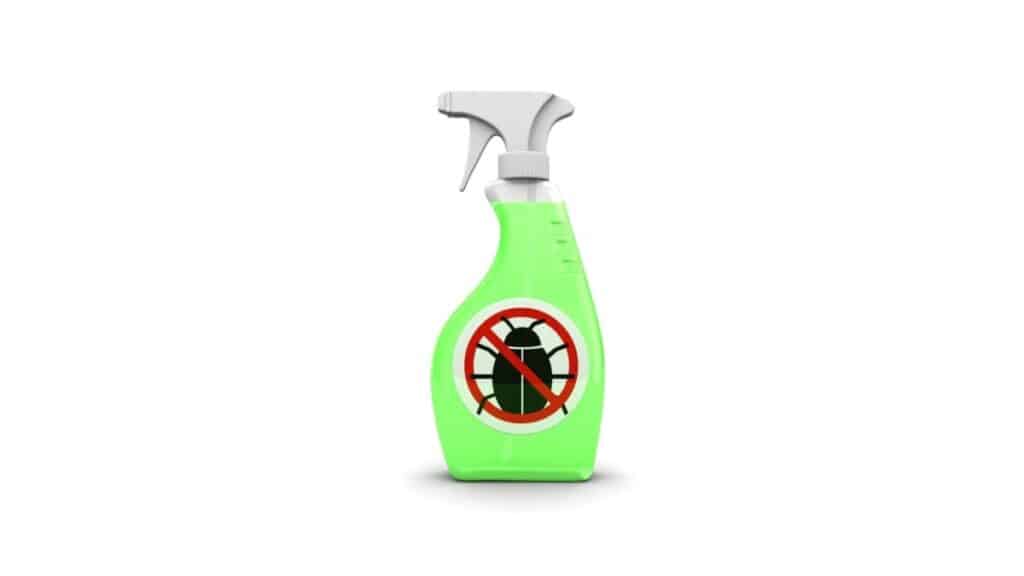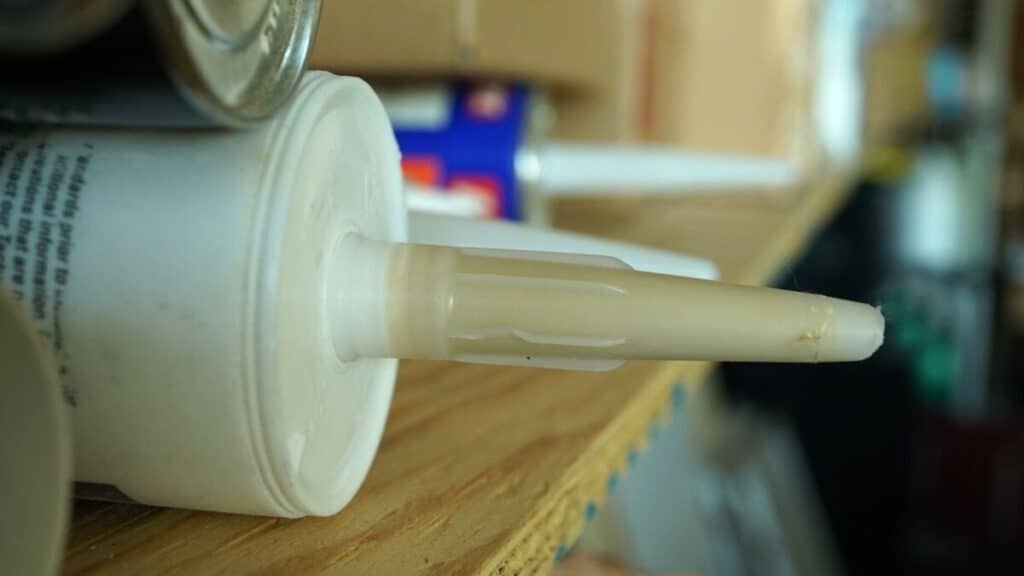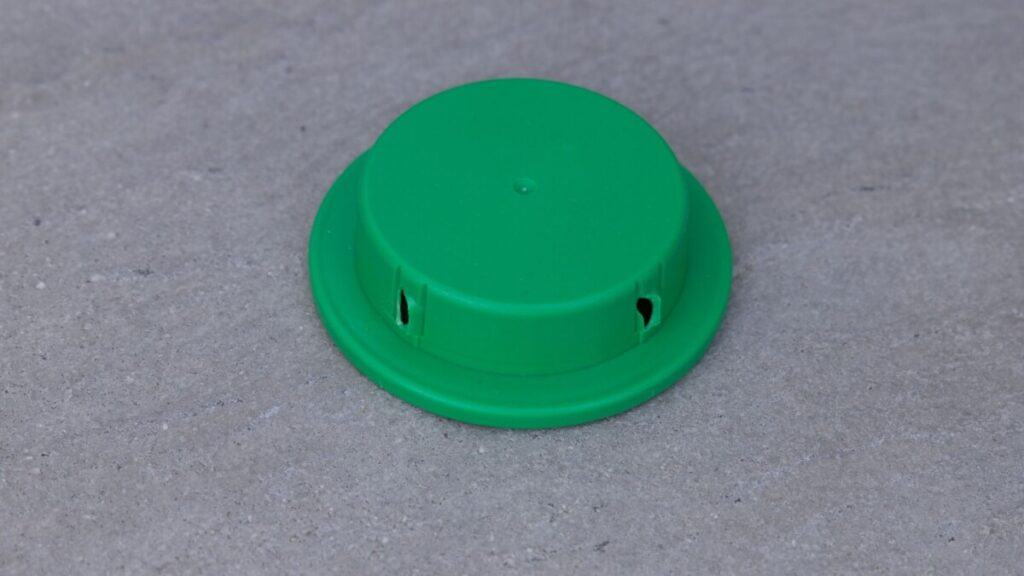
Are you tired of finding pesky insects in your home? Wondering how to keep bugs out of your window sill and living area?
You can deter bugs from entering your home through things like repellents, home remedies, and small do-it-yourself (DIY) repairs. This article will break down the following bug-repelling home methods:
- Spraying your windows with store-bought or natural bug repellents
- Cleaning your windows with ammonia
- Sealing cracks
- Fixing rips in your window screens
- Growing bug-repelling plants in your garden
- Keeping your yard and home clean
- Replacing your windows altogether
Let’s get started!
1. Spray Windows with Bug Repellent

The first step to deterring bugs from entering through your windows is bug repellent.
Even if you have brand new windows and screens in perfect condition, some tiny bugs like gnats can still creep their way in through minuscule holes.
It’s best to spray bug repellent around your window seals and screen every few months or more if you are still having a bug problem.
Some bug repellent sprays contain harmful chemicals that can lead to asthma attacks and other respiratory illnesses if inhaled, so be careful how much you spray and who will be near it.
To avoid this, you can also buy DEET-free bug repellent or a natural bug repellent.
Natural Bug Repellents

A great natural bug repellent is orange oil. This kills many bug species such as ants, flies, and termites. Just be careful where you apply it, as it also can kill beneficial insects like bees and other pollinators.
You can dilute orange oil with water or buy prediluted orange oil ready to use.
Another natural repellent is citronella oil which comes from the citronella plant. Mosquitoes in particular hate the smell of citronella so it is great to rub on your window sills; however, if you have pets, steer clear of citronella oil because it can be harmful to cats and dogs.

2. Clean Windows with Certain Chemicals
To help rid bugs, especially window sill bugs, clean your window sill with ammonia. You probably already have some in the house as a cleaning product and it doubles as a bug killer.
The scent of ammonia also repels any future bugs from coming near. Ammonia also doesn’t leave stains or residue so is ideal to clean any colored surfaces.
3. Seal Cracks
If you have older windows, you may have small cracks where the window is separating from the casing or the walls.
Some of these cracks are so small you can’t see them without a magnifying glass, but small insects can still crawl through. The best way to seal these cracks is with caulk using a caulking gun or expanding foam.

Before you begin to caulk or use an expanding foam, you need to give the window seal a good clean. Clean out any dirt, debris, and old caulk, and then reapply new caulk or foam in an even full seal around the entirety of the window.
You can also buy window inserts that seal your windows from the inside. You buy them based on size so they fit precisely your windows and act as a strong seal.
Caulk, expanding foam, and window seals will also help lower energy costs and keep your house cool.
4. Fix Rips and Holes in Window Screens
Examine your window screens closely, because even if they seem to be in perfect condition, they may have tiny holes that are hard to see by the naked eye.
You can use clear nail polish to mend extremely small holes and rips. For medium-sized rips, you can weave a bigger piece of screen over the hole.
If you have very big holes or too many, it is a good idea to completely replace the screen, because bugs can almost always find a way in.

You can even buy a mesh screen repair kit at your local hardware store that will fix most rips and tears, but if you have a bent wooden frame or are missing parts completely, it is best to replace the entire screen.
If you have the budget and don’t want to do it yourself, you can also get your new window screens installed by a professional.
5. Grow Plants that Repel Bugs

There are certain insect-repelling plants you can grow in your yard and near your windows in planter boxes. Some of these plants include:
- Lavender
- Citronella grass
- Basil, lemongrass
- Marigolds
- Chrysanthemums
- Mint
- Chives
- Petunias
- Bay leaves
- Garlic
- Rosemary
Plant marigolds if you want to deter mosquitoes and plant lice. Plant mint to repel mosquitoes, ants, and spiders. Basil repels houseflies and mosquitoes.
Use lavender to avoid gnats and mosquitoes. Chives prevent Japanese beetles and carrot rust flies. Petunias repel pests, tomato worms, leafhoppers, and asparagus beetles.

Bay leaves deter flies and roaches. Garlic can get rid of maggots, flies, and moths. Rosemary can get rid of various smaller bugs.
The best plant to repel bugs is chrysanthemums which can repel ants, bed bugs, roaches, Japanese beetles, spider mites, silverfish, lice, harlequin bugs, and ticks.
A lot of these plants have other benefits and can be used as herbs or just to decorate your garden.
Alternatively, insects do not like orange peel and limes, so you can also try putting these on your window sill for a few days.
6. Keep Your Yard Clean
If you are having trouble with bugs in your window sill, they are likely coming from your surrounding property. Keeping your yard clean is a great place to start to deter bugs from getting into your home through your windows.
Landscaping
It is important to keep your lawn trimmed so as not to harbor bugs. This way, the sun can easily dry the ground, making sure there is no dampness which bugs love.
Also, make sure to clean up any debris, such as a pile of leaves, since this decomposes, retains dampness, and attracts bugs.

Water Sources
Avoid any standing water, such as buckets or containers lying around, as many bugs lay eggs in water. Make sure to drain rainwater properly from your yard and, if you can, replace bird baths with solar fountains or change out the water often.
Leave a Space
It’s a good idea to leave a buffer between the nearest plant and your house. To do this, keep bushes trimmed and weeds pulled.
Leaving a few feet in between your house and plants will create enough space that many bugs won’t make the journey to your window sills.
7. Keep Your House Clean
If you have a clean yard and are still having problems with bugs trying to get into your home through your window sills, they may be trying to get to old food scraps in your home.
Even the tiniest amount of leftover food can attract bugs, so make sure you pay special attention to places like your kitchen and dining room.

Clean your countertops and tables in their entirety after each meal, making sure to get under and behind any plates, containers, and decorative items.
Make sure there is no food left in your sink and that your trash can is fully closed and clean. Also, remember to keep all leftover food in airtight containers.
Set Ant Traps
During the spring and summer months, ants can cause a big problem as they try to enter your home to find food and water.
There are several ant traps you can buy, but some common ones have liquid or solid bait.
You can rub liquid bait on your window sills. These contain sugar water which attracts ants, plus a poison. The ants will ingest this, then take the poison back to their colony to affect the others.
Solid baits work the same and contain insecticides that kill ants once consumed. In some cases, they make it back to their colony and spread the poison there as well.
It’s important to eliminate the colony so you do not have repeating problems. Make sure to place the ant traps outside your window, not inside, so you can kill the root of the problem before it comes back into your house.

8. Consider Replacing Your Windows
If you have tried all of the above methods and are still having trouble with bugs in your window sill, it may be time to replace your old windows.
This will also help to make your home more energy-efficient and keep your house heated or cooled.
Usually, replacing old windows can cost you anywhere between $300 to $700 per window.
Contact your local window installer to find out more. Make sure to compare prices and check reviews to get the best bang for your buck.
In Summary
There are a lot of ways to keep bugs out of your window sills and home, even some natural remedies that work wonders.
A great first step is to spray windows and screens with bug repellent, including natural repellents such as orange oil or citronella oil. It’s also a good idea to clean your window sills with ammonia.
Make sure to check the seals around your windows and screens very carefully. Adding a new layer of caulk to seals or patching up screen tears will help deter insects.
Make sure to keep your house and yard clean as well, adding in some bug-repelling plants for extra protection.
Alright, that’s it for this article, here are a few hand-selected articles that you might also find interesting reads:
Why Do Bugs Die On Window Sills? (Important Facts)Dead Flies on Your Window Sill? (Read This First!)
What Can I Put on My Windowsill to Keep Bugs Away? (Three Minute Read)
Recent Posts
Tiny Black Bugs in Bathroom NO WINGS: What They Are and What to Do!
Finding tiny black bugs in your bathroom can be uncomfortable, to say the least. Especially if they are persistent, or they appear in very large numbers, which they often like to do. When it...
Tiny Black Bugs in Plant Soil - What Are They & What To Do About It
A short horror story: You get a new houseplant. You do your best to take care of it. You’ve ensured that it has the right soil, the right amount of sun, it gets enough water. And then one day, you...

